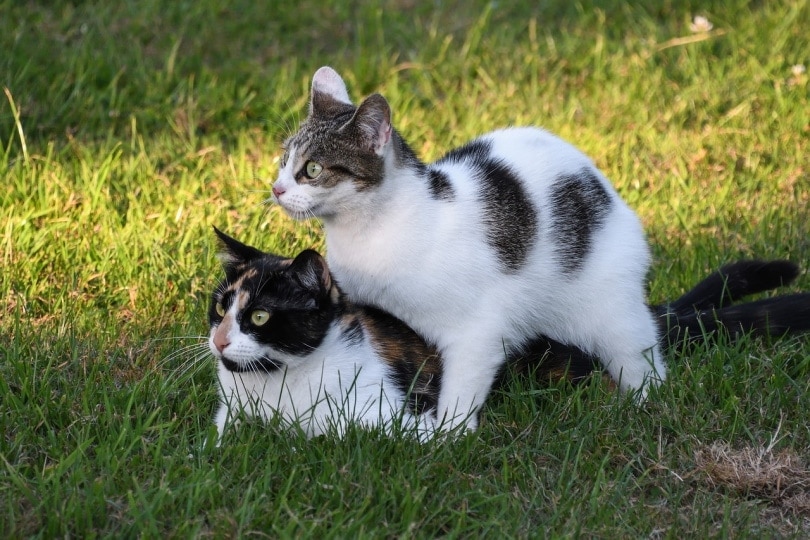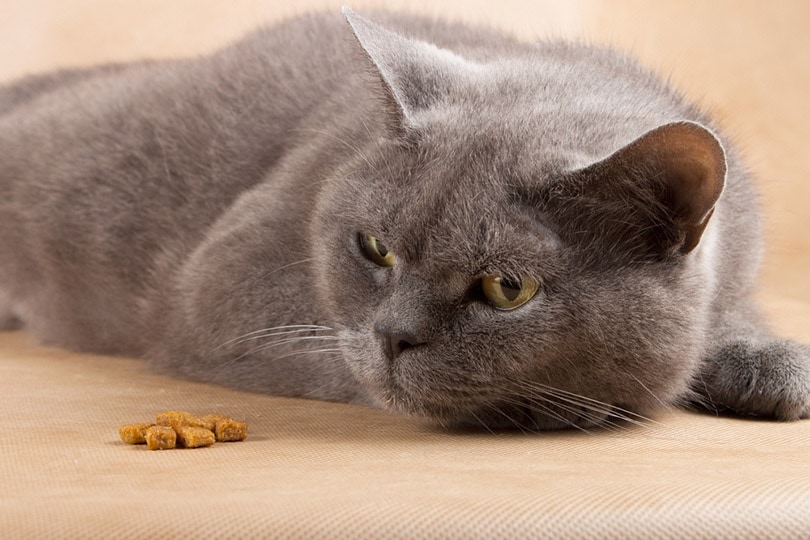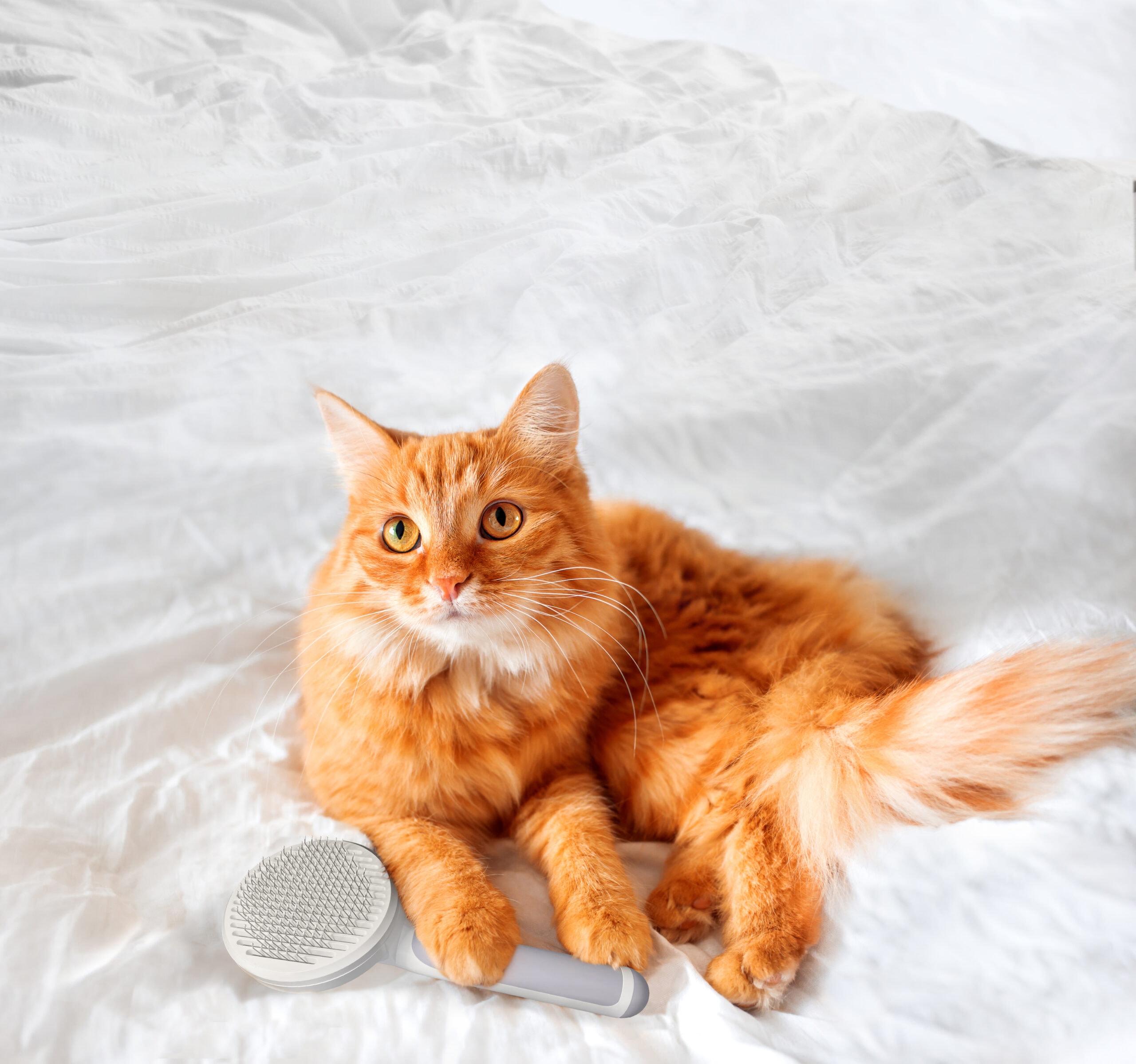Can Cats Eat Pigs’ Ears? Here’s Nutrition Facts & FAQ
By Luxifa Le
Updated on
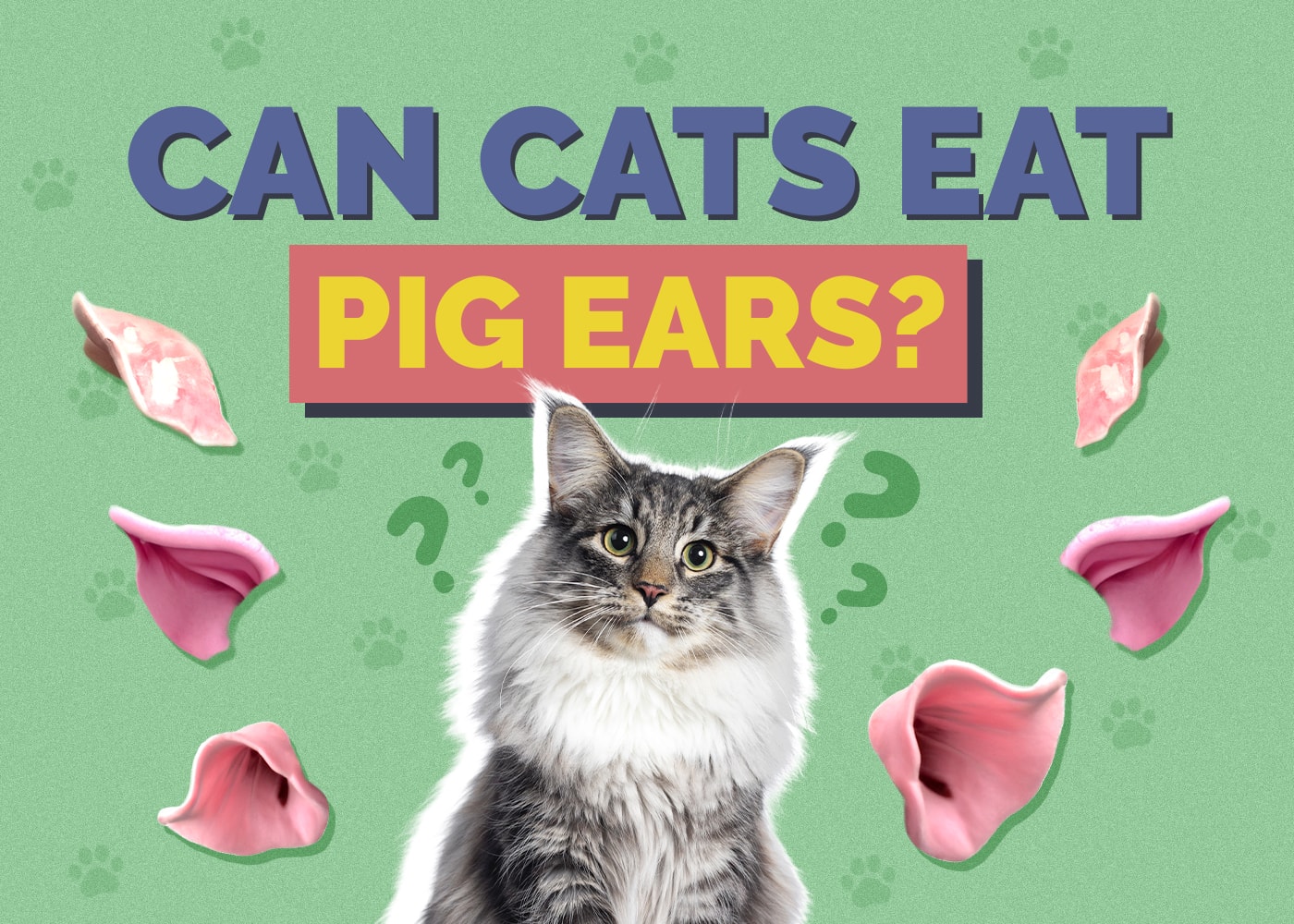
The answer to this question is a little more in-depth than a simple “yes” or “no.” Pigs’ ears are a type of treat aimed primarily at dogs. They’re chew toys that provide nutrients while the dog chews on them. However, they’re junk food for dogs and can be dangerous to humans who handle them or animals who eat them.
Pigs’ ears are not inherently toxic for cats. They can eat them, and they fit the nutritional profile for cats. However, they are easily contaminated with salmonella, and the spread of salmonella from pigs’ ears is a silent epidemic amongst dog owners.
Cat Nutrition in Short
Cats are known as being “obligate carnivores.” These true carnivores eat a wild diet of at least 70% animal proteins. Pigs’ ears fit into the nutritional profile of the obligate carnivore world; they’re an animal protein that can provide essential nutrients that cats need to thrive.
However, as with any animal, not all animal parts contain the same nutrients. Some are healthier for our pets than others, and pigs’ ears are not particularly beneficial for anyone’s consumption.
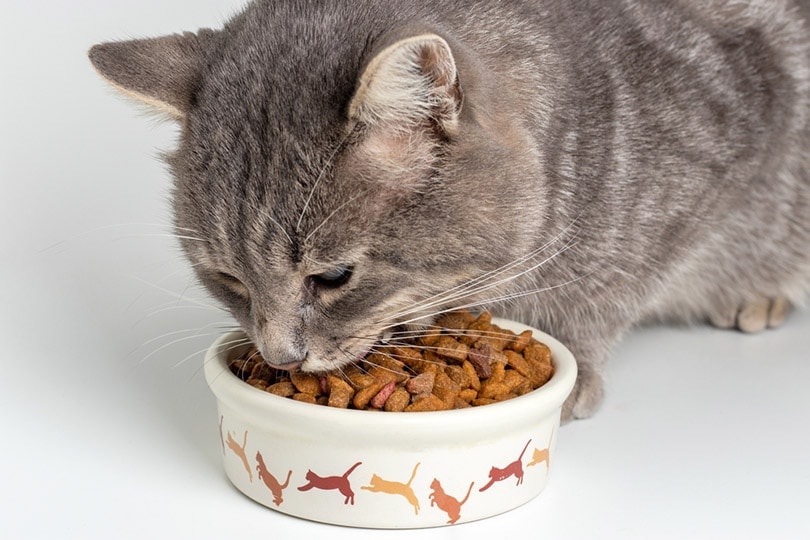
Pigs’ Ears Nutrition
Pigs’ ears are not exceptionally nutritious. Pigs’ ears do contain a protein content of around 69% on average, according to Bully Sticks. However, it’s worth taking their words with a grain of salt since they make rawhide products and will be more inclined to provide information to help them sell those.
Nutritionix notes that pigs’ ears contain a high amount of sodium at about 8% of a human’s daily allotment — which is 56 times greater than the recommended amount for cats. This could be especially worrying for any cat owners who have cats with kidney problems.
Pigs’ ears are also dense sources of fats. This can be good in moderation, but if a cat consumes too many, they’re fast to obesity since they don’t provide much else.
Overall, pigs’ ears don’t provide excellent nutrition to cats, dogs, or people. They’re not dense in the nutrients we associate with good health and are thick in sodium. Regardless of what kind of animal is eating them, it’s safe to say these would be considered junk food.

Salmonella Contamination
Salmonella contamination has been a widespread problem with pigs’ ears. As a result of contact with Pigs’ Ears, the CDC first investigated Salmonella contamination in 2019. However, the link between the treat and the infection was published as early as 2001 in Canada.
While the CDC reported that the salmonella outbreak associated with pigs’ ears had quelled by October 2019, the American Veterinary Medical Association said that the treats remained a source of concern in 2020.
The CDC traced the salmonella outbreak to a few notable import countries for the pigs’ ear treats. However, this process is made difficult based on the storing conditions of the treats. While some pet stores would store their pigs’ ears in individual wrapping, others would keep them in a large bulk bin that pet parents could fish one out of.
The AMVA reports that “salmonella can stick around in the environment for quite some time” and notes that it can be hard to trace salmonella infections that were associated with pigs’ ear bulk bins in 2019.
Salmonella contamination of has been a rampant problem in the pet health world for some time. While the pigs’ ears themselves may be safe for cats, many vets recommend against feeding cats and dogs pigs’ ears because of the high risk of salmonella contamination.
This is especially true for pet parents who are or are close to someone who is immunocompromised. Handling a pigs’ ear treat puts you and anyone who comes into your home at risk of catching salmonella from a surface that the pigs’ ears have touched.

Alternatives to Pigs’ Ears
Luckily there are as many alternatives to pigs’ ear treats as reasons to take advantage of them. While most of these treats are labeled for and aimed at dogs, there’s no real reason they couldn’t feed a cat.
Cows’ Ears
Cows’ Ears have become a popular treat that pet parents can use in place of pigs’ ears. Beef is lean meat that contains less fat and a higher density of nutrients than pork. Several brands now take advantage of the production of these treats. However, pet parents loved Barkworthies Cow Ears!
Antlers
Antlers are a flavored chew toy for dogs. They’re hardy and don’t splinter or break like bones and rawhides. Antlers are a good idea if your cat has pica and likes to eat things that aren’t traditionally food, like plastic or styrofoam.
Bones & Chews Antlers are the most popular source of antlers in the United States. Their Split Elk Antlers are extremely popular amongst pet parents of dogs, and giving them to your cat should be no problem!
Lambs’ Ears
Lambs’ Ears are another suitable replacement for pigs’ ears. They are softer and less likely to splinter than pigs’ ears. Lambs’ Ears used to be significantly more difficult to find than pigs’ ears, but many brands have stepped up to make Lambs’ Ear treats more accessible in recent years. Ziwi’s Liver-Coated Lambs’ Ears were our favorites! The liver coating provides essential nutrients and taurine that your cat will need to thrive!
Now that you know what you can safely feed your cat, it’s just as important to find a bowl that supports their health and well-being. With whisker-friendly bowls and a wide tray to catch any spills, our Hepper NomNom Cat Bowl is our favorite option.
Final Thoughts
Cats will be attracted to many different foods, but that doesn’t mean that we should be feeding them anything they look at! pigs’ ear treats are safe for cats to eat and nutritionally beneficial in some ways. However, there are a lot of risks associated with feeding your cat pigs’ ear treats. From obesity to salmonella, pigs’ ears have many dangers associated with them, and pet parents would do well to avoid them for their pets’ overall safety.
As always, if you suspect that your cat is having issues with something they ate, you must contact your veterinarian. Your veterinarian will best be able to guide you in whether or not your cat needs medical attention.
See also:
- Can Cats Eat Sesame Seeds? What You Need to Know!
- Can Cats Eat Ranch Dressing? What You Need to Know!
Featured Image Credit: Binh Thanh Bui, shutterstock


